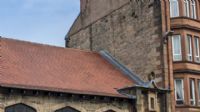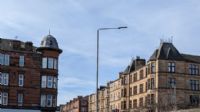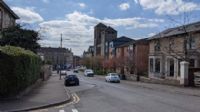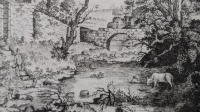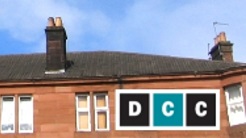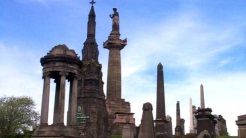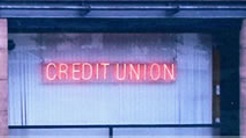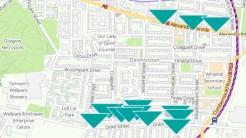Memories of The Duke Street/Alexandra Parade Area
Margaret Blair nee Telfer posted on the 24/05/2021 1:48:41 AM
Memories of The Duke Street/Alexandra Parade Area of Dennistoun, centred by Armadale Street and the Drives running off it at right angles.
Armadale Street of sandstone flats runs steeply up from Duke Street, then noted for its women’s prison, to Alexandra Parade, noted for its huge park.
Hidden behind a high stone wall which ran flush with the shops on either side, the women’s prison did not appear to have any connection to the area. But it was a forbidding presence among the bustling commercial life at ground level where you could visit small grocery shops, ironmongers, lingerie and china shops as well as bakeries. Here they knew every customer by name, and brought in fresh produce and bread daily.
If you looked up at the prison’s wall from across the road, behind it you could see a towering Victorian building built of grey stone, its façade covered with regular rows of barred windows. It looked chill and dreary.
The Alexandra Parade Park takes up one side of the Parade. Stretching back for over 100 acres of well-kept grass, ponds and woodland, it was a weekend paradise for the many local children. Most of these went to the Alexandra Parade Primary School across the road from the park, and then on to Whitehill Academy on Whitehill Road parallel to Armadale Street.
Nearer to the Duke Street end of Armadale than our number 89, were three churches attended by the worthy folk of Armadale and “Drives” running off it at right angles. Tucked in to one side further up was a little Italian restaurant serving the most delicious ice cream. Once I saved up enough to take my Aunt Nell there for a special time. She managed to insert her nicely rounded figure into her side of the table in our booth and we had a great chat as Aunt Nell reminisced about when her brothers were alive. As we were ready to leave, I realised with horror I’d forgotten my purse. My aunt laughed and laughed as she paid for our treat. I offered to pay her back but Aunt Nell refused saying it had been the best talk and ice cream, sheer fun she’d had in a long time.
Across a street from 89 Armadale where my family, the Telfers, lived was Whitehill Secondary School, attended by most of the Armadale residents including all my aunts and uncles after they had gone through Alexandra Parade Primary School at the north of the area. Number 89 and its fellow flats were twicw as large as the ones to the south. This was due to the larger frontage and the fact that it had been built back around the corner of Inglewood Drive.
Some of those living on Armadale and the Drives had lived first in a Duke Street small tenement flat and then literally moved up in the world. They made new friends who lived in the same ‘close’ but continued with the old ones. They all chatted as they made their rounds of the same shops along Duke Street and visited each other for birthdays and teas.
One birthday party I attended on Onslow Drive was for an Alexandra Parade School classmate, like me recently come to our area; in this case from Aberdeen. Aunt Belle helped me with buying and wrapping a present, and with braiding my hair and tying ribbons on the braids. She accompanied me to see that I was at the right flat. We had lovely food and played games. But the memory of that occasion I hold most dear to this day was the beautifully articulated, slow speech of the birthday girl in particular when she said ‘Aberdeen’. She spoke often of Aberdeen and clearly was homesick for it.
The Armadale people shared. They shared a delicious bowl of newly made soup, a pot of jam, their joys and their sorrows. Several years before, down a stair, there had been rejoicing as their only child, a daughter, was being married. Everyone either attended the wedding or went to the church down the road to see it. All agreed it was perfect. Then time passed, and my aunts were asked down to visit and I was taken along. I sat quietly in a corner while the mother poured out her sorrow at the divorce of her beautiful daughter from her cheating husband. “They had been out for dinner,” she said, “and she was sitting in that chair over there,” gesturing to a wide arm chair comfortably upholstered in dark red. “In front of us he went down on one knee, held out an open box with a lovely diamond ring and asked her to marry him. He sang “The Way You Look Tonight”: ‘Yes you’re lovely, never, ever change/Keep that breathless charm/Won’t you please arrange it?/ “Cause I love you/Just the way you look tonight’. It was so romantic. How could it go wrong?” Aunt Nell went over with a clean handkerchief.
A memory of my time after the end of WW II in 89 Armadale Street, Dennistoun is of standing at the bay window of the living room beside my Aunt Nell’s (Helen’s) chair in the gloaming (lovely Scottish word). We were looking down the street for the lamplighter with his ladder and lighting pole. There he came in his practiced, steady stride, a tall, spare, older figure. If his lighted pole didn’t light the mantle at first, he’d rest the ladder against the bars provided at the top of the lamp and could then light the mantle with the pole. The ladder was narrowed at the top to fit the bars. It was not until 1971 that street lamps in Glasgow went all electric. In a special ceremony, on September 1 1971, the Lord Provost Sir Donald Liddle lit the last remaining gas street lamp in North Portland Street.
In 1946, I lived at 89 Armadale Street. My Aunt Nell (Helen) used to relax morning and afternoon watching the children going to and from school for Alexandra Parade Primary School. They were just as happy and close as the ones in other parts. Aunt Nell enjoyed seeing them racing and wrestling, laughing and kidding each other on their journey to and from school.
In the Qualifying class at Alexandra Parade School I was friends with Maisie Diack from a close-knit happy family living near Alexandra Park. Her father took us to the park on Saturdays. David Hogarth was also in the same class. His mother, a nurse, was a friend of my Aunt Helen and when his father died in David's first year at Glasgow University, referred to by Glaswegians as “the Uni,” she had to take him out of university for financial reasons. However, he had been editor of the Glasgow University magazine (GUM) and was already working as a copy boy in the Glasgow Herald. David had a distinguished, world-wide career in journalism and died in the south of France where after retiring he ran an Art Gallery for fun and benefit of everyone. In GUM, David gave Bill Russell his first published piece. Bill became the London-based political correspondent for the Glasgow Herald and a well-known film critic. I am still in frequent contact with Bill who was in my class at GU.
I am sure my Aunt's views of the children reminded her of her own happy childhood with her older sister and younger brothers one of whom was my father. They all attended Whitehill School. From the age of 15, the eldest, Aunt Belle (Isabella) worked as a typist (then called a typewriter) at a publishing house downtown where by 1946 she was a senior manager and stayed there into her seventies. The three younger brothers, Will (William), Jim (James) and Jock (John) set up together in a successful financial firm, and the youngest, my father, Alexander, passed his Glasgow University entrance exams and won a scholarship to Glasgow School of Art at 15. His first day when being shown round the School of Art my father had to go into a room where people were drawing a naked lady. He was very embarrassed and my father's brothers and sister laughed him out of it when he returned home and told them.
In the First World War, of the three older brothers, the middle brother Jim died in France, the younger one Jock came home with sleeping sickness and the eldest, Will returned home with shell shock. My father Alexander recovered after two years of surgery for his wounds and took a dangerous job in Shanghai China's police force. It paid well enough for him to be able to live and also send a substantial monthly sum back to his brothers and sisters. Alexander, my father became head of the Shanghai Municipal Police detectives (Criminal Investigation Department). The brother with sleeping sickness, Jock, never had to go into an outside facility, for Aunt Nell looked after him at 89 Armadale Street seeing his family every day until he died in 1939. Their mother Elizabeth died of a heart attack immediately after attending a victory parade on Duke Street and their father, John, a well-paid engineer followed her soon after. Aunt Belle’s fiancée had also been killed in the war. Aunt Nell’s fiancée, Davey (David) Brown married her and came to live with them after the war’s end to help out. He had a good managerial position at the local engineering firm of Beardmore’s which produced armaments during the war. He and Aunt Nell decided not to have any children until Jock died by which time they were too old. I am amazed and proud of my family the Telfers, first of the way they became prosperous in tough circumstances, and second of the extraordinary qualities of character they demonstrated in continuing their effort when the First World War wrecked that prosperity.
For generations, the magical, close-knit community of Dennistoun has provided those from any part of the district with a happy childhood, solid education and the backbone to face all of life's challenges, and no doubt still does.
- Be the first to reply :
You can reply to the post Memories of The Duke Street/Alexandra Parade Area by completing the form. No registration required. The forum is moderated in order that messages adhere to the editorial integrity of Dennistoun Online. Please read the guidelines before you submit to the forum. If you believe that we have missed a message that contravenes these guidelines then please contact us and we will either edit or remove it.

